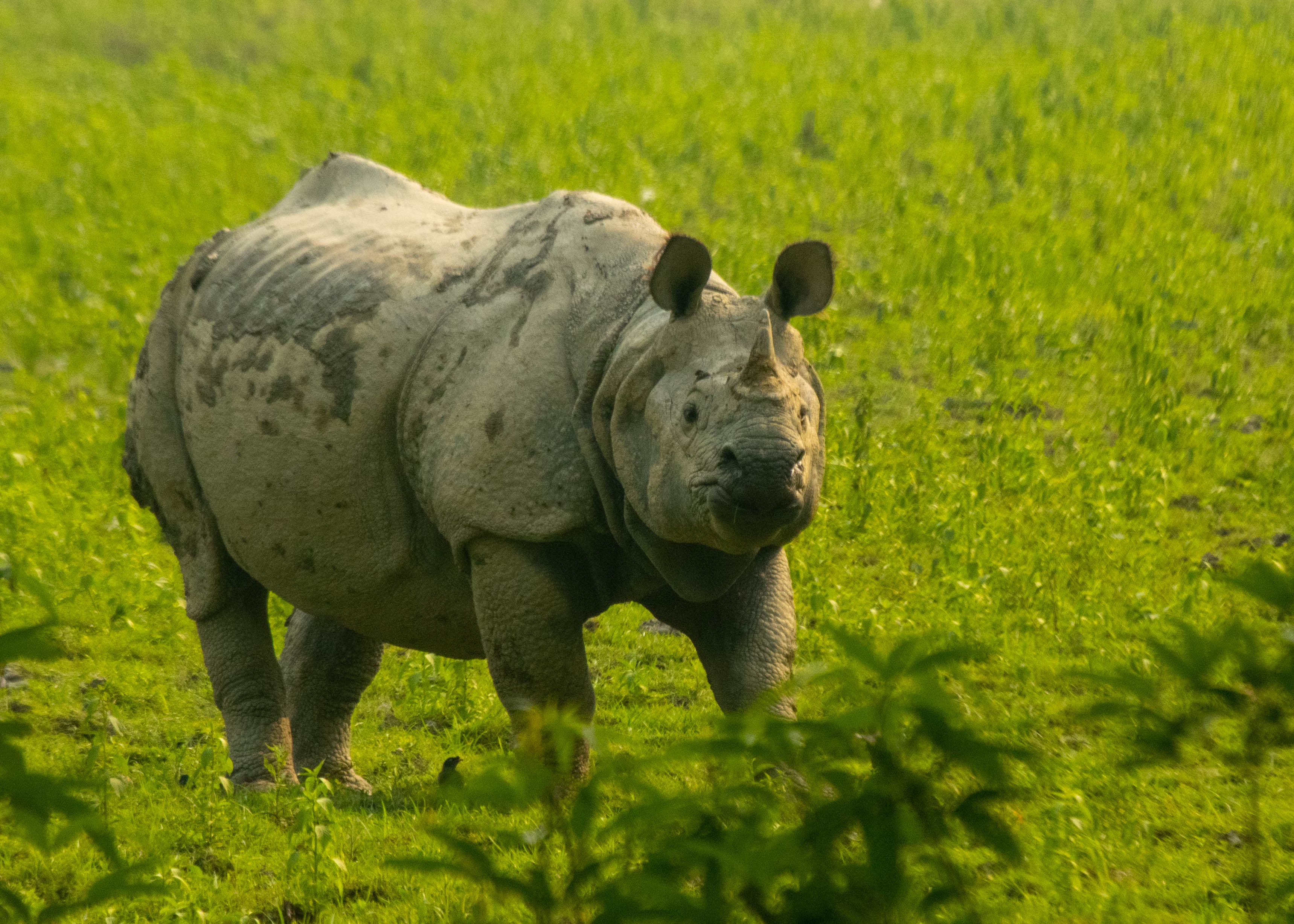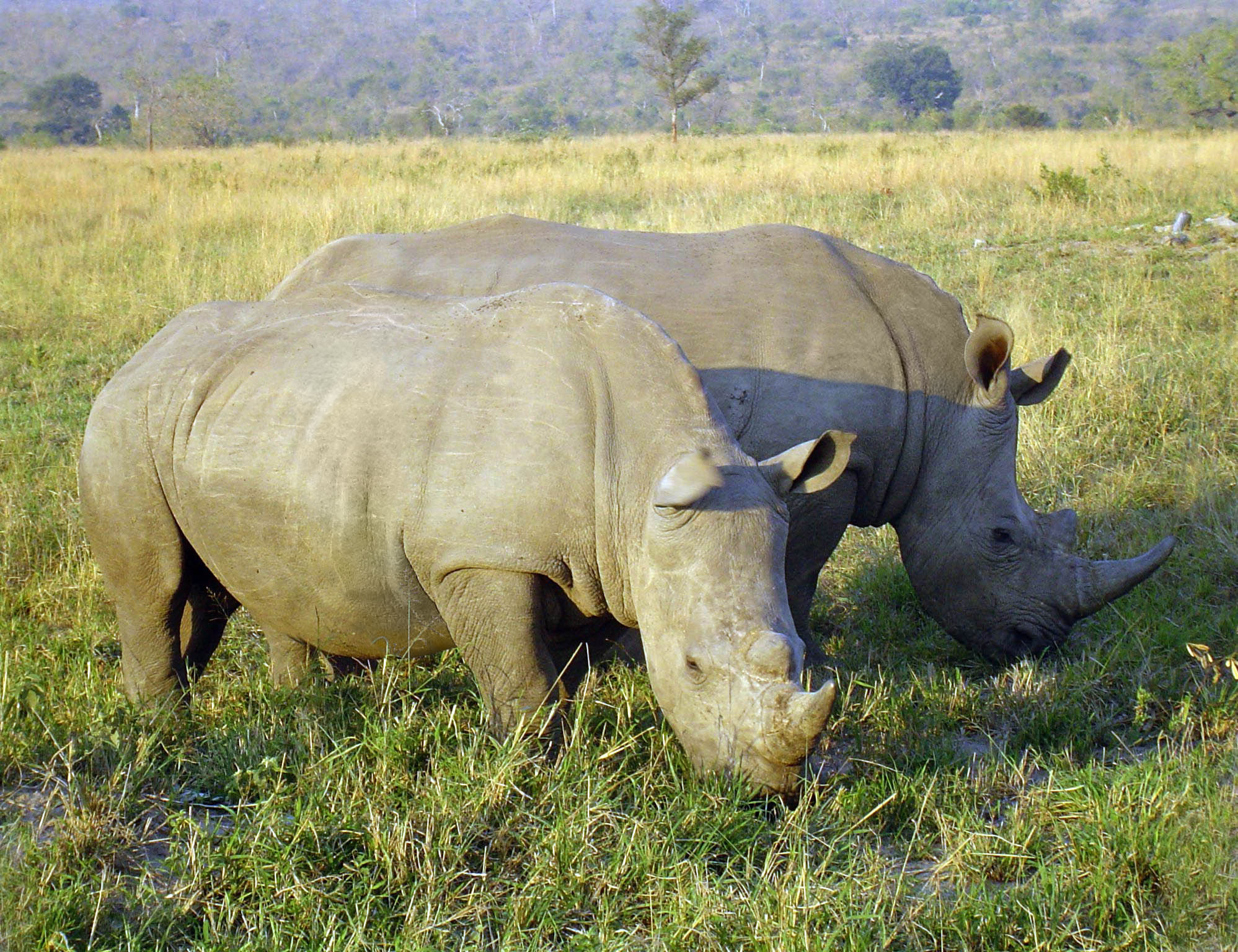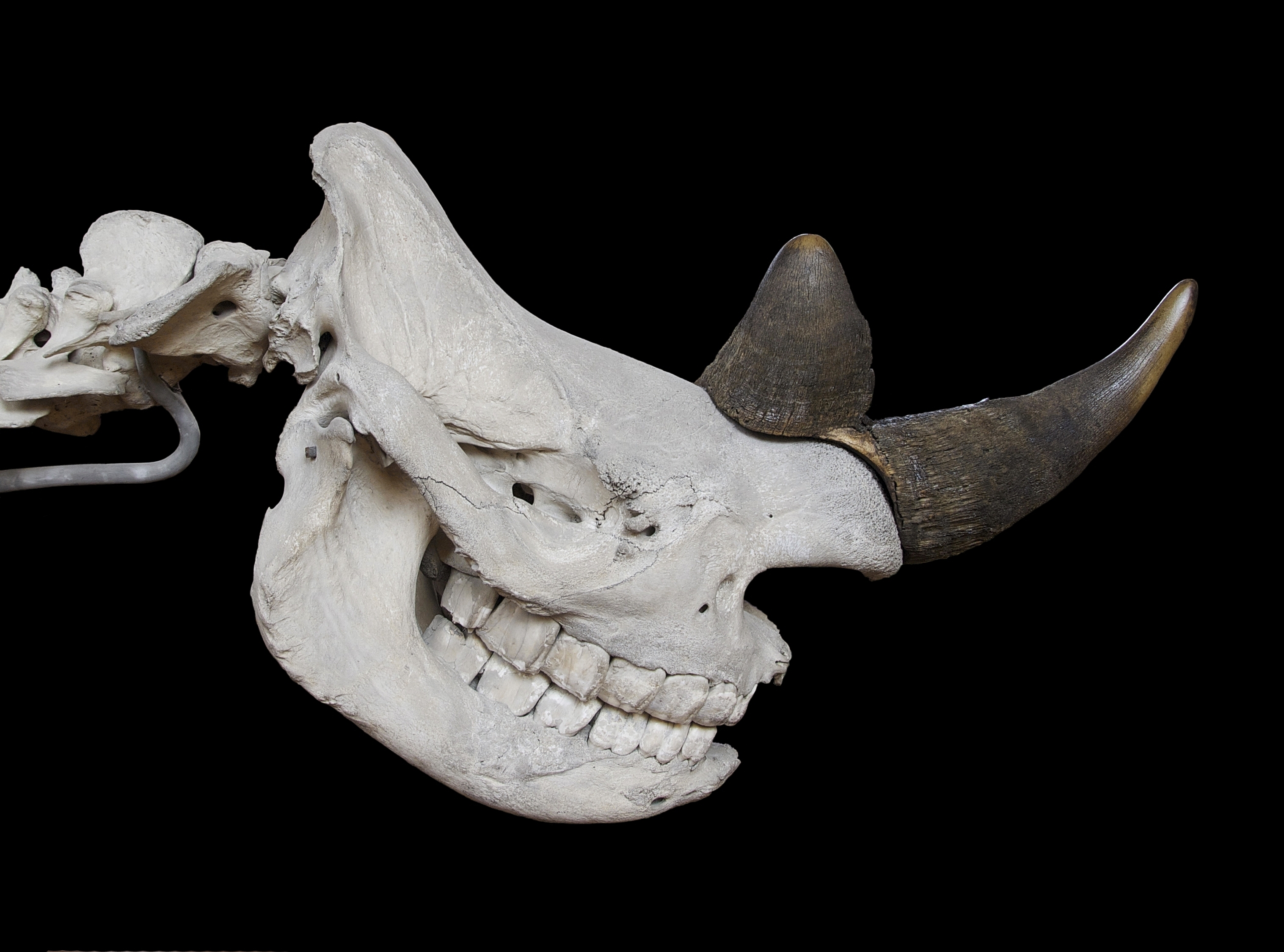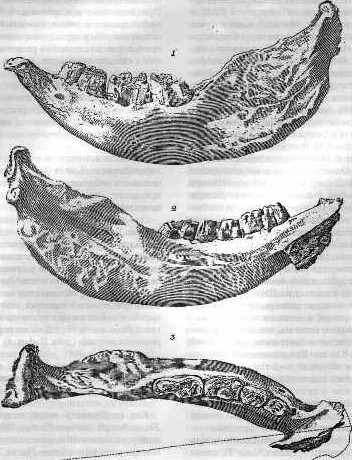|
Coelodonta Antiquitatis
''Coelodonta'' (, from the Ancient Greek κοῖλος (''koîlos''), meaning "hollow", and οδούς (''odoús''), meaning "tooth", in reference to the deep grooves of their molars) is an extinct genus of Eurasian rhinoceroses that lived from about 3.7 million years to 14,000 years ago, in the Pliocene and the Pleistocene epochs. It is best known from the type species, the woolly rhinoceros (''Coelodonta antiquitatis''), which ranged throughout northern Eurasia during the Pleistocene. The earliest known species, ''Coelodonta thibetana,'' lived in Tibet during the Pliocene, with the genus spreading to the rest of Eurasia during the Pleistocene. ''Coelodonta'' presumably grew to be around 3.6m long and 1.7m tall. Species Species recognised as members of ''Coelodonta'', according to Deng ''et al''. (2011), include: * ''Coelodonta thibetana'' (Deng et al. 2011): The most primitive species of the genus, inhabited the Tibetan Plateau during the Pliocene. * ''Coelodonta nihowanens ... [...More Info...] [...Related Items...] OR: [Wikipedia] [Google] [Baidu] |
Pliocene
The Pliocene ( ; also Pleiocene) is the epoch (geology), epoch in the geologic time scale that extends from 5.33 to 2.58See the 2014 version of the ICS geologic time scale million years ago (Ma). It is the second and most recent epoch of the Neogene Period in the Cenozoic, Cenozoic Era. The Pliocene follows the Miocene Epoch and is followed by the Pleistocene Epoch. Prior to the 2009 revision of the geologic time scale, which placed the four most recent major glaciations entirely within the Pleistocene, the Pliocene also included the Gelasian Stage, which lasted from 2.59 to 1.81 Ma, and is now included in the Pleistocene. As with other older geologic periods, the Stratum, geological strata that define the start and end are well-identified but the exact dates of the start a ... [...More Info...] [...Related Items...] OR: [Wikipedia] [Google] [Baidu] |
Tibet
Tibet (; ''Böd''; ), or Greater Tibet, is a region in the western part of East Asia, covering much of the Tibetan Plateau and spanning about . It is the homeland of the Tibetan people. Also resident on the plateau are other ethnic groups such as Mongols, Monpa people, Monpa, Tamang people, Tamang, Qiang people, Qiang, Sherpa people, Sherpa, Lhoba people, Lhoba, and since the 20th century Han Chinese and Hui people, Hui. Tibet is the highest region on Earth, with an average elevation of . Located in the Himalayas, the highest elevation in Tibet is Mount Everest, Earth's highest mountain, rising above sea level. The Tibetan Empire emerged in the 7th century. At its height in the 9th century, the Tibetan Empire extended far beyond the Tibetan Plateau, from the Tarim Basin and Pamirs in the west, to Yunnan and Bengal in the southeast. It then divided into a variety of territories. The bulk of western and central Tibet (Ü-Tsang) was often at least nominally unified under a ser ... [...More Info...] [...Related Items...] OR: [Wikipedia] [Google] [Baidu] |
Indian Rhinoceros
The Indian rhinoceros (''Rhinoceros unicornis''), also known as the greater one-horned rhinoceros, great Indian rhinoceros or Indian rhino, is a species of rhinoceros found in the Indian subcontinent. It is the second largest living rhinoceros species, with adult males weighing and adult females . Its thick skin is grey-brown with pinkish skin folds. It has a single horn on its snout that grows up to long. Its upper legs and shoulders are covered in wart-like bumps, and it is nearly hairless aside from the eyelashes, ear fringes and tail brush. The Indian rhinoceros is native to the Indo-Gangetic Plain and occurs in 12 protected areas in northern India and southern Nepal. It is a Grazing (behaviour), grazer, eating mainly grass, but also twigs, leaves, branches, shrubs, flowers, fruits and aquatic plants. It is a largely solitary animal, only associating in the breeding season and when rearing calves. Females give birth to a single calf after a gestation of 15.7 months. Th ... [...More Info...] [...Related Items...] OR: [Wikipedia] [Google] [Baidu] |
White Rhinoceros
The white rhinoceros, also known as the white rhino or square-lipped rhinoceros (''Ceratotherium simum''), is the largest extant species of rhinoceros and the most Sociality, social of all rhino species, characterized by its wide mouth adapted for grazing (behaviour), grazing. The species includes two subspecies with dramatically different conservation outlooks: the southern white rhinoceros, with an estimated 17,464 individuals in the wild as of the end of 2023, and the northern white rhinoceros. The northern subspecies is critically endangered and on the brink of extinction; its last known male, Sudan (rhinoceros), Sudan, died in March 2018, leaving behind only a very small number of females in captivity. Both subspecies have faced significant threats, primarily from poaching for their horns and habitat loss, which contribute to the species' overall Conservation status, conservation status of Near Threatened. Naming One popular, though widely discredited, theory for the origi ... [...More Info...] [...Related Items...] OR: [Wikipedia] [Google] [Baidu] |
Black Rhinoceros
The black rhinoceros (''Diceros bicornis''), also called the black rhino or the hooked-lip rhinoceros, is a species of rhinoceros native to East Africa, East and Southern Africa, including Angola, Botswana, Eswatini, Kenya, Lesotho, Malawi, Mozambique, Namibia, South Africa, Tanzania, Zambia, and Zimbabwe. Although the species is referred to as ''black'', its colours vary from brown to grey. It is the only extant species of the genus ''Diceros''. The other rhinoceros native to Africa is the white rhinoceros (''Ceratotherium simum''). The word "white" in the name "white rhinoceros" is often said to be a misinterpretation of the Afrikaans word ' (Dutch language, Dutch ') meaning wide, referring to its square upper lip, as opposed to the pointed or hooked lip of the black rhinoceros. These species are now sometimes referred to as the square-lipped (for white) or hook-lipped (for black) rhinoceros. The species overall is classified as critically endangered (even though the south-wes ... [...More Info...] [...Related Items...] OR: [Wikipedia] [Google] [Baidu] |
Elasmotherium
''Elasmotherium'' is an extinct genus of large rhinoceros that lived in Eastern Europe, Central Asia and East Asia during Late Miocene through to the Late Pleistocene, with the youngest reliable dates of at least 39,000 years ago. It was the last surviving member of Elasmotheriinae, a distinctive group of rhinoceroses separate from the group that contains living rhinoceros (Rhinocerotinae). Five species are recognised. The genus first appeared in the Late Miocene in present-day China, likely having evolved from '' Sinotherium'', before spreading to the Pontic–Caspian steppe, the Caucasus and Central Asia. The best known ''Elasmotherium'' species, ''E. sibiricum'', sometimes called the Siberian unicorn, was among the largest known rhinoceroses, with an estimated body mass of around , comparable to an elephant, and is often conjectured to have borne a single very large horn. However, no horn has ever been found, and other authors have conjectured that the horn was likely ... [...More Info...] [...Related Items...] OR: [Wikipedia] [Google] [Baidu] |
Cladogram
A cladogram (from Greek language, Greek ''clados'' "branch" and ''gramma'' "character") is a diagram used in cladistics to show relations among organisms. A cladogram is not, however, an Phylogenetic tree, evolutionary tree because it does not show how ancestors are related to descendants, nor does it show how much they have changed, so many differing evolutionary trees can be consistent with the same cladogram. A cladogram uses lines that branch off in different directions ending at a clade, a group of organisms with a last common ancestor. There are many shapes of cladograms but they all have lines that branch off from other lines. The lines can be traced back to where they branch off. These branching off points represent a hypothetical ancestor (not an actual entity) which can be inferred to exhibit the traits shared among the terminal taxa above it. This hypothetical ancestor might then provide clues about the order of evolution of various features, adaptation, and other e ... [...More Info...] [...Related Items...] OR: [Wikipedia] [Google] [Baidu] |
Stephanorhinus
''Stephanorhinus'' is an extinct genus of two-horned rhinoceros native to Eurasia and North Africa that lived during the Late Pliocene to Late Pleistocene. Species of ''Stephanorhinus'' were the predominant and often only species of rhinoceros in much of temperate Eurasia, especially Europe, for most of the Pleistocene. The last two species of ''Stephanorhinus'' – Merck's rhinoceros (''S. kirchbergensis'') and the narrow-nosed rhinoceros (''S. hemitoechus'') – went extinct during the last glacial period. Etymology The first part of the name, ''Stephano-'', honours Stephen I, the first king of Hungary. (The genus name was coined by Kretzoi, a Hungarian.) The second part is from (Greek for "nose"), a typical suffix of rhinoceros genus names. Taxonomy The taxonomic history of ''Stephanorhinus'' is long and convoluted, as many species are known by numerous synonyms and different genera – typically ''Rhinoceros'' and '' Dicerorhinus'' – for the 19th and most of the ... [...More Info...] [...Related Items...] OR: [Wikipedia] [Google] [Baidu] |
Dicerorhinus
''Dicerorhinus'' (Greek: "two" (dio), "horn" (keratos), "nose" (rhinos)) is a genus of the family Rhinocerotidae, consisting of a single extant species, the two-horned Sumatran rhinoceros (''D. sumatrensis''), and several extinct species. The genus likely originated from the Late Miocene of central Myanmar. Many species previously placed in this genus probably belong elsewhere''.'' Taxonomy Species provisionally considered valid include: * †''Dicerorhinus fusuiensis'' originally described as ''Rhinoceros'' ''fusuiensis'' Early Pleistocene, South China. * †''Dicerorhinus gwebinensis'' Zin-Maung-Maung-Thein et al., 2008 Known from a skull of Pliocene-Early Pleistocene age found in Myanmar. Some authors have considered the skull not distinguishable from that of ''D. sumatrensis''. Historically, ''Dicerorhinus'' was a wastebasket taxon. Revisions by several authors over the years have removed many species: Transferred to ''Stephanorhinus ''Stephanorhinus'' is an extinct genu ... [...More Info...] [...Related Items...] OR: [Wikipedia] [Google] [Baidu] |
Sumatran Rhinoceros
The Sumatran rhinoceros (''Dicerorhinus sumatrensis''), also known as the Sumatran rhino, hairy rhinoceros or Asian two-horned rhinoceros, is a rare member of the family Rhinocerotidae and one of five extant species of rhinoceros; it is the only Extant taxon, extant species of the genus ''Dicerorhinus''. It is the smallest rhinoceros, although it is still a large mammal; it stands high at the shoulder, with a head-and-body length of and a tail of . The weight is reported to range from , averaging . Like both African species, it has two horns; the larger is the nasal horn, typically , while the other horn is typically a stub. A coat of reddish-brown hair covers most of the Sumatran rhino's body. The Sumatran rhinoceros once inhabited rainforests, swamps and cloud forests in India, Bhutan, Bangladesh, Myanmar, Laos, Thailand, Malaysia, Indonesia and southwestern China, particularly in Sichuan. It is now critically endangered, with only five substantial populations in the wild: ... [...More Info...] [...Related Items...] OR: [Wikipedia] [Google] [Baidu] |
Woolly Rhinoceros
The woolly rhinoceros (''Coelodonta antiquitatis'') is an extinct species of rhinoceros that inhabited northern Eurasia during the Pleistocene epoch. The woolly rhinoceros was a member of the Pleistocene megafauna. The woolly rhinoceros was large, comparable in size to the largest living rhinoceros species, the white rhinoceros (''Ceratotherium simum''), and covered with long, thick hair that allowed it to survive in the extremely cold, harsh mammoth steppe. It had a massive hump reaching from its shoulder and fed mainly on herbaceous plants that grew in the steppe. Mummified carcasses preserved in permafrost and many bone remains of woolly rhinoceroses have been found. Images of woolly rhinoceroses are found among cave paintings in Europe and Asia, and evidence has been found suggesting that the species was hunted by humans. The range of the woolly rhinoceros contracted towards Siberia beginning around 17,000 years ago, with the youngest known r ... [...More Info...] [...Related Items...] OR: [Wikipedia] [Google] [Baidu] |
China
China, officially the People's Republic of China (PRC), is a country in East Asia. With population of China, a population exceeding 1.4 billion, it is the list of countries by population (United Nations), second-most populous country after India, representing 17.4% of the world population. China spans the equivalent of five time zones and Borders of China, borders fourteen countries by land across an area of nearly , making it the list of countries and dependencies by area, third-largest country by land area. The country is divided into 33 Province-level divisions of China, province-level divisions: 22 provinces of China, provinces, 5 autonomous regions of China, autonomous regions, 4 direct-administered municipalities of China, municipalities, and 2 semi-autonomous special administrative regions. Beijing is the country's capital, while Shanghai is List of cities in China by population, its most populous city by urban area and largest financial center. Considered one of six ... [...More Info...] [...Related Items...] OR: [Wikipedia] [Google] [Baidu] |









